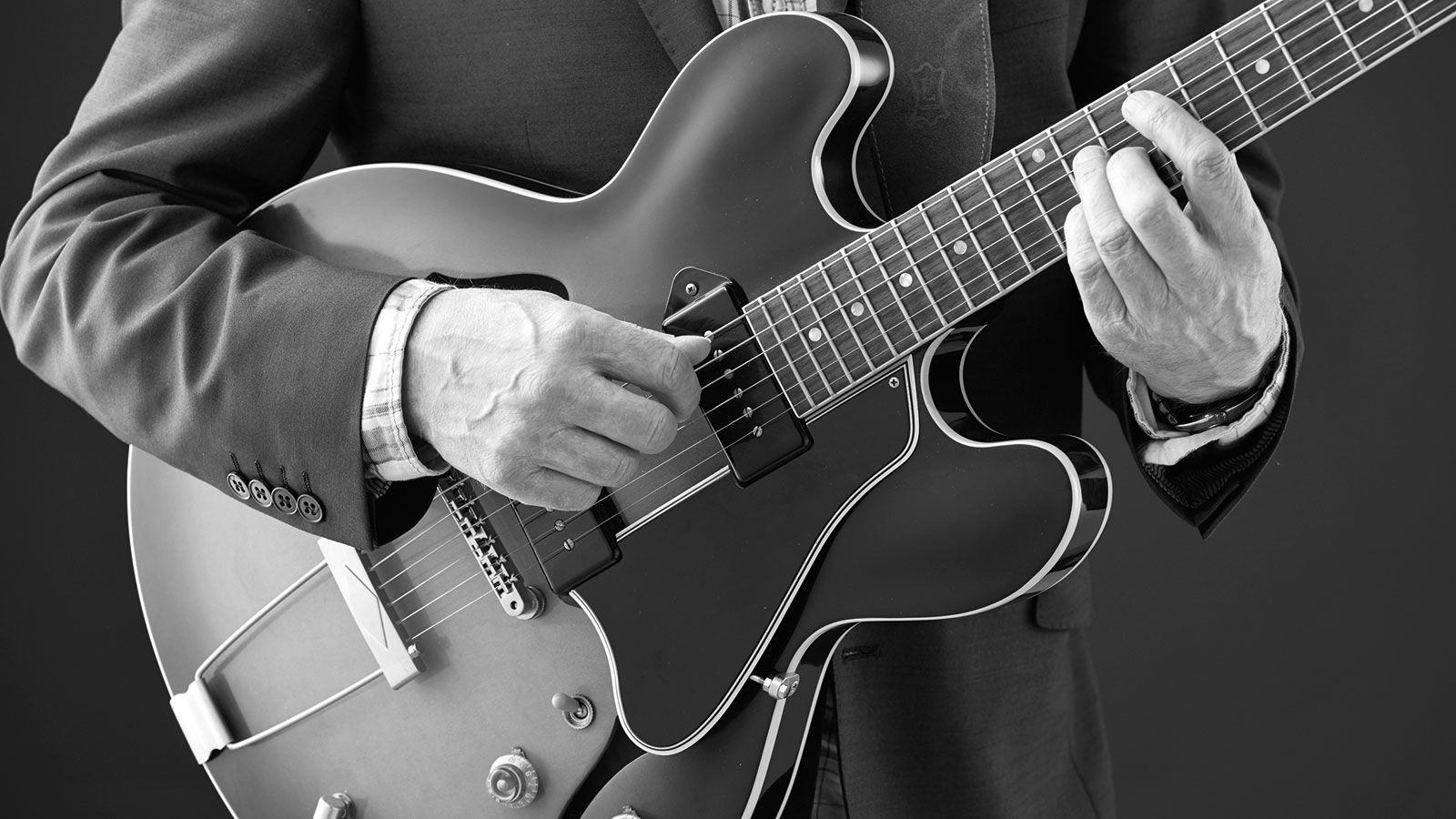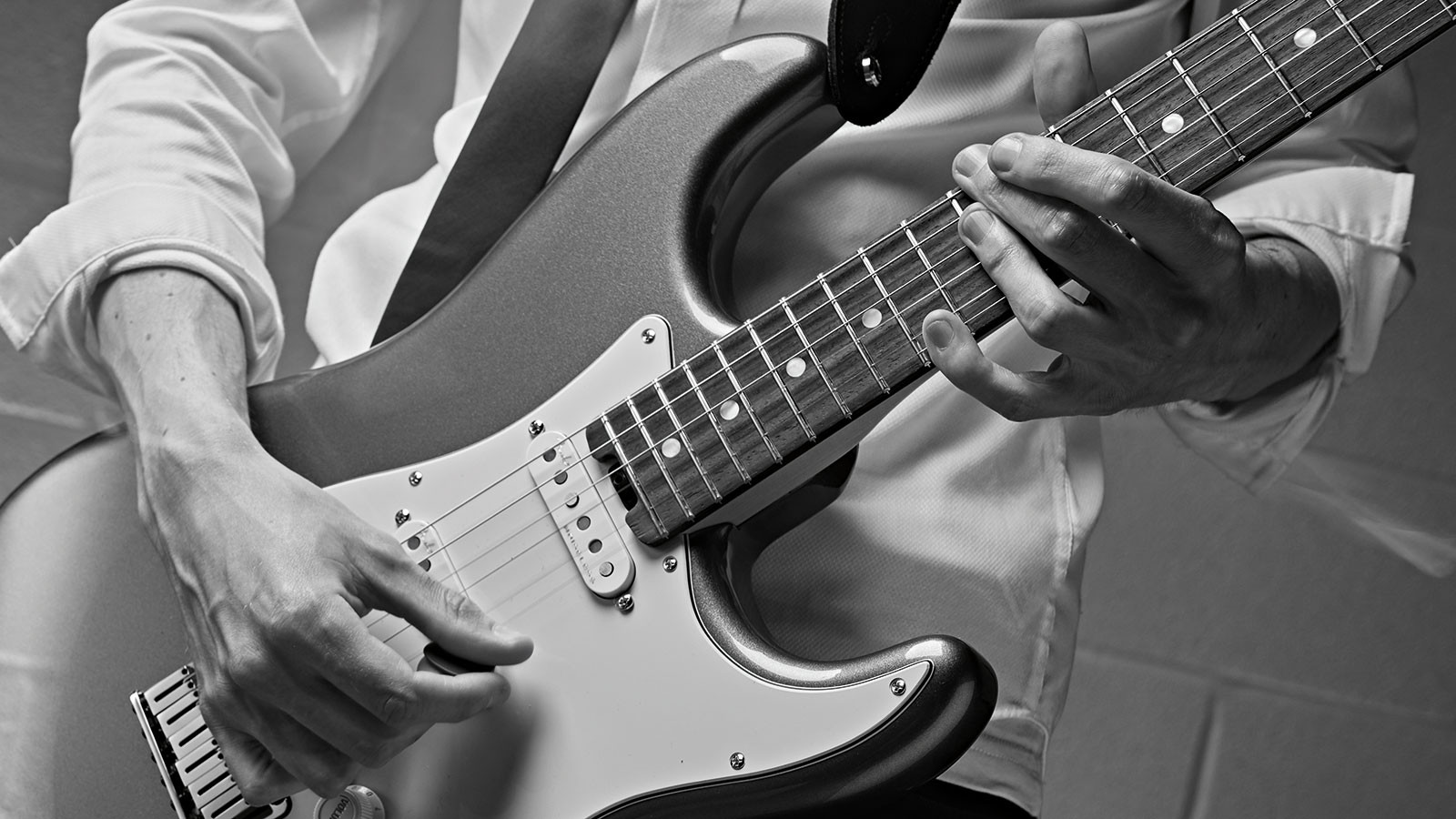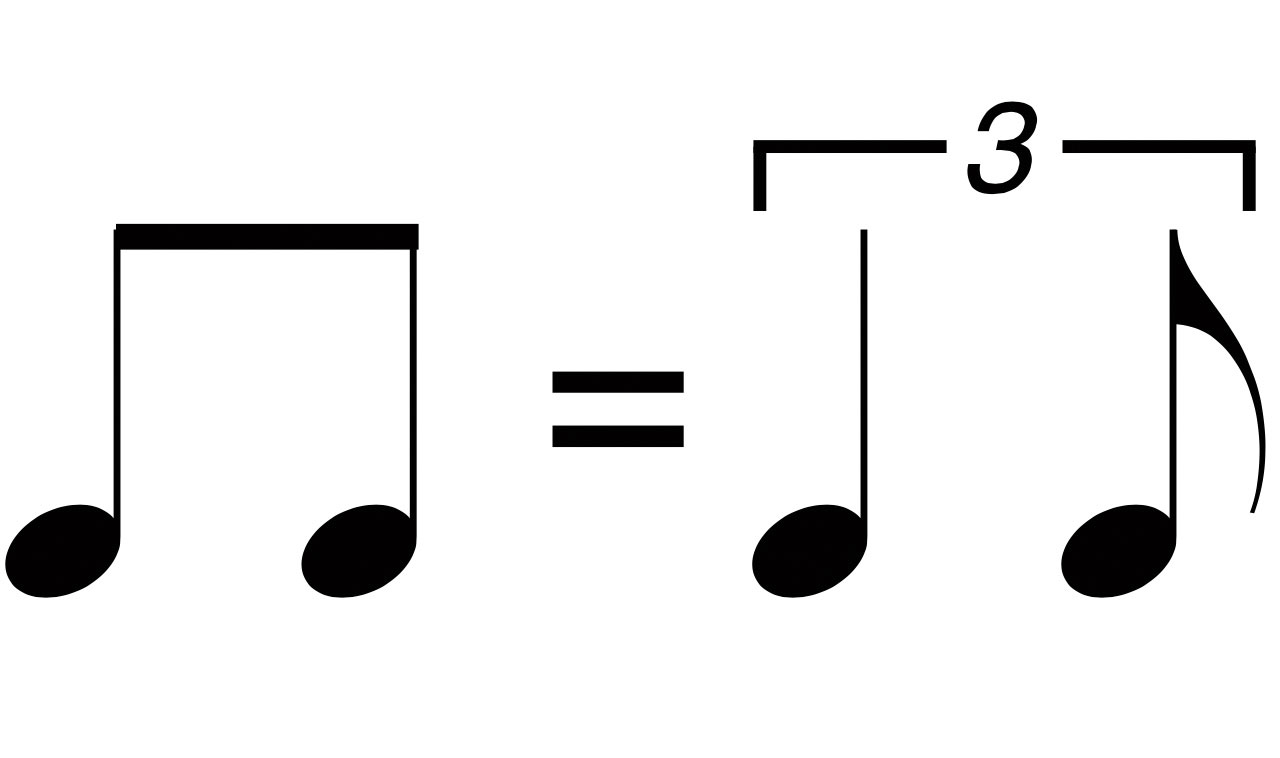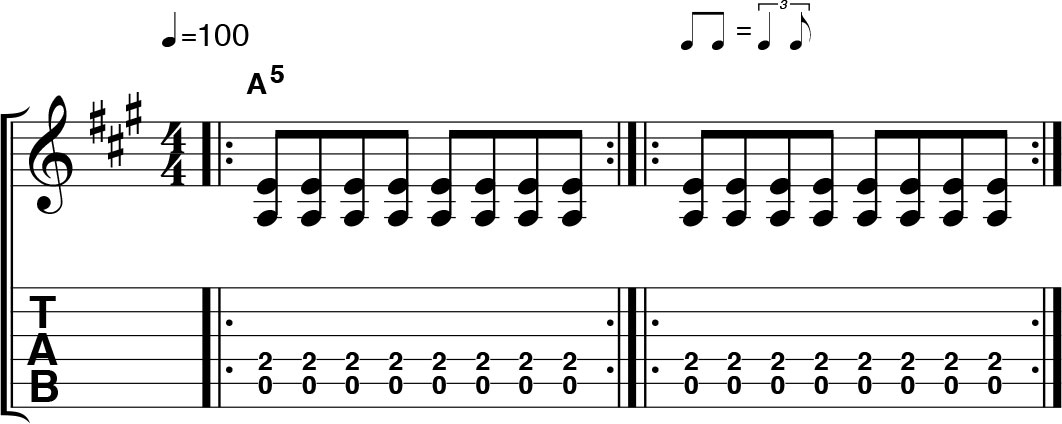Guitar basics: how to play with shuffle feel
Set your tunes on shuffle with this tab and audio lesson

A key part of many styles of music, we help you find your groove and get jamming with a shuffle...
“What is this ‘shuffle feel’ you speak of?”
Most music is divided into groups of four beats called bars. Each beat can be split in two to give eight notes per bar. These ‘eighth’ notes are usually the same length. A shuffle feel makes the first of each pair of notes slightly longer. It’s very popular in blues and jazz.
“Ugh. That sounds complicated, is there a lot of difficult notation?”
Not at all. In fact, the hardest part is actually understanding this rhythm that is meant to be felt - and not analysed or written down. There’s usually a single symbol over the sheet music telling you to play with shuffle feel. Apart from this, the notation stays the same. Our first tab example shows an A5 chord, initially played straight, then with a shuffle - indicated with the marking over bar 2.
“Okay, that doesn’t sound so bad. You mentioned something about blues and jazz?”

Shuffle feel - also called swing - features heavily in jazz and blues, so any of the masters like Wes Montgomery and Stevie Ray Vaughan are essential listening. The shuffle is easiest to hear in blues because jazz can be very complex, so the shuffle isn’t quite so obvious to new ears. Elsewhere, metal monsters Pantera were famous for their heavy shuffle grooves.
Want all the hottest music and gear news, reviews, deals, features and more, direct to your inbox? Sign up here.
“Enough talking! Let’s get to it.”
The first thing to do is get used to the way a shuffle sounds by comparing it to non-shuffle or ‘straight’ feel. In a shuffle the first of each pair of eighth notes is longer. Try saying ‘murder-murder-murder-murder’ to verbalise the feel; ‘mur-’ should be slightly longer than ‘-der’. Straight feel is more like ‘ladder-ladder- ladder-ladder’, where ‘ladd-’ and ‘-er’ are the same length. As we say, it’s all about feeling the groove.
“Nice exercise, but how does it work in the real world?”
Example 2 is a classic shuffle riff that’s used in countless blues and classic rock tracks. It’s an excellent introduction to the shuffle rhythm as it’s a steady stream of notes that’s nice and easy to play. There are countless variations to this pattern, so don’t be afraid to experiment.
“I think I’m set. Any parting advice?”
Palm-muting can help the riff sound tighter and give the notes clarity. This is especially true if you’re using a distorted tone. If you’re comfortable with the shuffle feel then try it out.
Beat it!

Tips for snappier offbeats...
1. Pieces of eight
Two eighth notes are the same length. A stream of eighth notes would have a ‘ladder-ladder- ladder-ladder’ feel.
2. Counting in threes
If you’re really precise, in a shuffle feel, the first note is twice the length of the second note and sometimes shuffle grooves are referred to as ‘triplet feel’. Note the ‘3’ that indicates this.
3. Feel the shuffle
So the symbol says, ‘when you see two eighth notes written, play a note the length of two triplet notes, followed by another the length of one triplet note’. Or in plain English: play with a shuffle feel!
Moving between straight and shuffle feels

Although the notation looks the same, bar 2 has the shuffle mark. Play the backing track and listen to the rhythm switch from ‘ladder’ to ‘murder’ feel.
Blues shuffle riff

This is a classic shuffle riff that’s used in lots of blues and classic rock. To give it some extra edge, try adding palm-muting.
Total Guitar is Europe's best-selling guitar magazine.
Every month we feature interviews with the biggest names and hottest new acts in guitar land, plus Guest Lessons from the stars.
Finally, our Rocked & Rated section is the place to go for reviews, round-ups and help setting up your guitars and gear.
Subscribe: http://bit.ly/totalguitar
